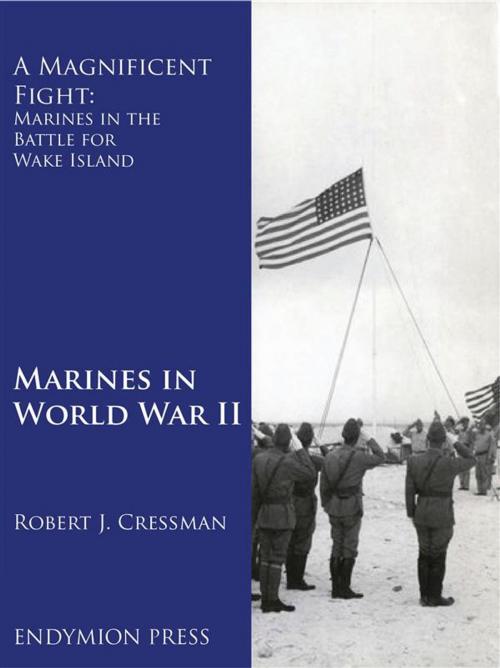A Magnificent Fight: Marines in the Battle for Wake Island
Nonfiction, History, Military, United States, World War II| Author: | Robert J. Cressman | ISBN: | 9781531293000 |
| Publisher: | Endymion Press | Publication: | August 15, 2016 |
| Imprint: | Language: | English |
| Author: | Robert J. Cressman |
| ISBN: | 9781531293000 |
| Publisher: | Endymion Press |
| Publication: | August 15, 2016 |
| Imprint: | |
| Language: | English |
It is Monday, 8 December 1941. On Wake Island, a tiny sprung paper-clip in the Pacific between Hawaii and Guam, Marines of the 1st Defense Battalion are starting another day of the backbreaking war preparations that have gone on for weeks. Out in the triangular lagoon formed by the islets of Peale, Wake, and Wilkes, the huge silver Pan American Airways Philippine Clipper flying boat roars off the water bound for Guam. The trans-Pacific flight will not be completed. Word of war comes around 0700. Captain Henry S. Wilson, Army Signal Corps, on the island to support the flight ferry of B-17 Flying Fortresses from Hawaii to the Philippines, half runs, half walks toward the tent of Major James P. S. Devereux, commander of the battalion’s Wake Detachment. Captain Wilson reports that Hickam Field in Hawaii has been raided.
Devereux immediately orders a “Call to Arms.” He quickly assembles his officers, tells them that war has come, that the Japanese have attacked Oahu, and that Wake “could expect the same thing in a very short time.”
Meanwhile, the senior officer on the atoll, Commander Winfred S. Cunningham, Officer in Charge, Naval Activities, Wake, learned of the Japanese surprise attack as he was leaving the mess hall at the contractors’ cantonment (Camp 2) on the northern leg of Wake. He ordered the defense battalion to battle stations, but allowed the civilians to go on with their work, figuring that their duties at sites around the atoll provided good dispersion. He then contacted John B. Cooke, PanAm’s airport manager and requested that he recall the Philippine Clipper. Cooke sent the prearranged code telling John H. Hamilton, the captain of the Martin 130 flying boat, of the outbreak of war...
It is Monday, 8 December 1941. On Wake Island, a tiny sprung paper-clip in the Pacific between Hawaii and Guam, Marines of the 1st Defense Battalion are starting another day of the backbreaking war preparations that have gone on for weeks. Out in the triangular lagoon formed by the islets of Peale, Wake, and Wilkes, the huge silver Pan American Airways Philippine Clipper flying boat roars off the water bound for Guam. The trans-Pacific flight will not be completed. Word of war comes around 0700. Captain Henry S. Wilson, Army Signal Corps, on the island to support the flight ferry of B-17 Flying Fortresses from Hawaii to the Philippines, half runs, half walks toward the tent of Major James P. S. Devereux, commander of the battalion’s Wake Detachment. Captain Wilson reports that Hickam Field in Hawaii has been raided.
Devereux immediately orders a “Call to Arms.” He quickly assembles his officers, tells them that war has come, that the Japanese have attacked Oahu, and that Wake “could expect the same thing in a very short time.”
Meanwhile, the senior officer on the atoll, Commander Winfred S. Cunningham, Officer in Charge, Naval Activities, Wake, learned of the Japanese surprise attack as he was leaving the mess hall at the contractors’ cantonment (Camp 2) on the northern leg of Wake. He ordered the defense battalion to battle stations, but allowed the civilians to go on with their work, figuring that their duties at sites around the atoll provided good dispersion. He then contacted John B. Cooke, PanAm’s airport manager and requested that he recall the Philippine Clipper. Cooke sent the prearranged code telling John H. Hamilton, the captain of the Martin 130 flying boat, of the outbreak of war...















